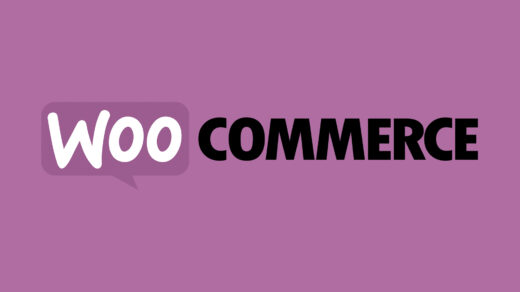
A few years ago, the basic concept of the cloud was derided by reducing it to the idea of “someone else’s computer,” a saying that decorates the coffee mugs of quite a few IT professionals. Oracle CTO Larry Ellison was equally skeptical, complaining that “we’ve redefined cloud computing to include everything that we already do.”
In the simplest terms, however, the definition of cloud computing is this:
A distributed digital infrastructural resource that delivers hosted services by way of the internet.
And while there are several different ways to define cloud computing, it all comes down to these five key aspects:
- Networking
- Data management
- Storage
- Services
- Devices
Types of Cloud Services
The cloud computing service sector has become a rapidly growing multibillion-dollar industry. To put this into perspective, Gartner estimates cloud spending will reach $260 billion by the end of 2018. And Gartner is not alone in highlighting cloud computing’s growing prevalence in the market.
In their Cloud Vendor Revenue Projection Project, 2017, Wikibon estimates that all categories comprising the enterprise cloud will expand at a compound annual growth rate (CAGR) of 19 percent from 2016 to 2026. Whereas, traditional infrastructure, on-premise software, and legacy methods of business process outsourcing will experience a negative 3 percent CAGR.
The dynamic effects of cloud adoption are already playing out and are most evident in the three wide-ranging and common models of cloud computing services: software-as-a-service (SaaS), infrastructure-as-a-service (IaaS), and platform-as-a-service (PaaS).
Another defining cloud characteristic is that the computing, storage, networking, and integration capabilities of each SaaS, IaaS, and PaaS offering are effectively owned by the vendor and delivered as a service on an on-demand, subscription basis to the customer.
These three categories are designed to be stacked on top of another, which means they can work independently of each other or in a combination. Imagine a three-tiered pyramid with SaaS sitting on top benefiting end users, PaaS in the middle aiding developers and serving integration requirements, and IaaS at the base assisting system administrators.
1: Software-as-a-Service (SaaS)
Commonly referred to as the “on-demand software,” SaaS is the most commonly implemented cloud computing service for business customers. With a wide variety of application and service types, SaaS is replacing or augmenting traditional enterprise systems including ERP, accounting, human resources management, content management systems, supply chain and inventory management, and customer relationship management (CRM) programs, among others. Since SaaS doesn’t require purchasing an expensive licensed program, users can access numerous cloud applications on an as-needed basis. According to the 2017 State of the SaaS-Powered Workplace Report, the average business has 16 SaaS applications deployed, a 33 percent jump over the previous year. For more information on SaaS, read our top SaaS FAQ roundup.
2: Platform-as-a-Service (PaaS)
Think of PaaS as the middleman of cloud services as it sits central, linking SaaS and IaaS. This cloud service provides users with all the tools needed to create a digital platform. It features the groundwork for storage, networking, and virtual servers with software and hardware necessary to design, develop, test, implement, manage, and operate applications while integrating, analyzing, and sharing data.
3: Infrastructure-as-a-service (IaaS)
The IaaS layer offers essential building blocks, database storage, and a virtual platform. By building cost-saving and scalable IT solutions, the complex and expensive hardware is outsourced to a third-party cloud vendor. All of these IT components are automated for customers who are able to self-provision the storage or processing power of the IaaS platforms. Vendors are also responsible for ongoing maintenance, including system upkeep, backing up data, and business steadiness.
Types of Cloud Deployments
How an organization handles and secures business assets and needs can be reflected in how it deploys its cloud service. But cloud deployment is more than just a “private cloud vs. public cloud” debate. The rise of hybrid cloud deployment has added a whole different flavor.
1. Public Cloud
A public cloud is maintained through a third-party IaaS cloud provider. Servers, storage, and other digital resources are delivered through the internet. Since the provider absorbs all infrastructure and bandwidth costs, a customer only needs a web browser to access service and manage accounts.
Pros: Reliable service, cost-effective through economies of scale, no maintenance, elastic scalability
Cons: Often deemed unsafe for handling highly private and sensitive data; must comply with strict security regulations
2. Private Cloud
In a private cloud, cloud computing services, infrastructure, and networking are operated solely by an organization independent of other enterprises or public platforms. A private cloud can be maintained in one of two ways: A company’s data center is physically located in-house, or a third-party vendor is paid to host everything on a private instance.
Pros: More control, customizable, scalable, flexible, secure
Cons: More expensive and maintenance (if kept on-site)
3. Hybrid Cloud
As assumed, a hybrid cloud deployment is a blend of private and public clouds. This infrastructure allows data, information, and apps to be shared and transferred interchangeably. The private side can be used for sensitive processes such as finances and data recovery, whereas the public side can run high-volume applications
Pros: Enhanced agility, accessibility, security
Cons: More maintenance, complex compatibility
Reference:
- https://www.cleo.com/blog/knowledge-base-what-is-cloud-computing


